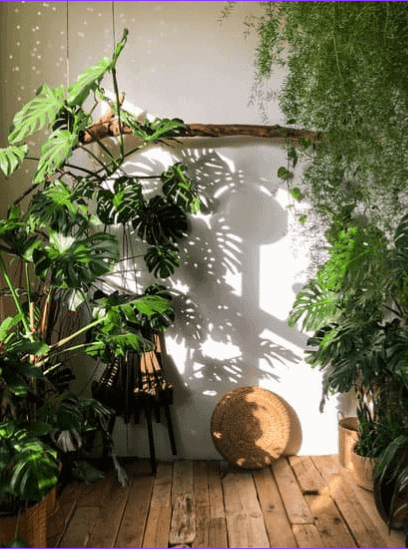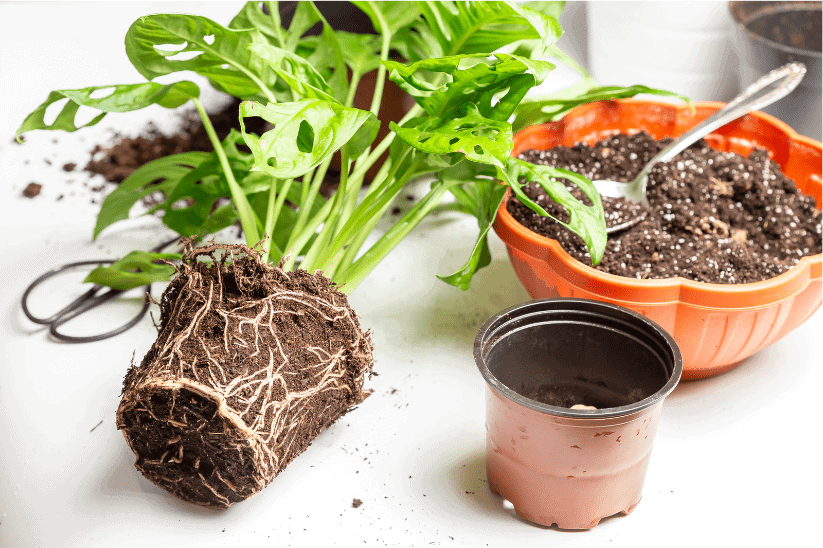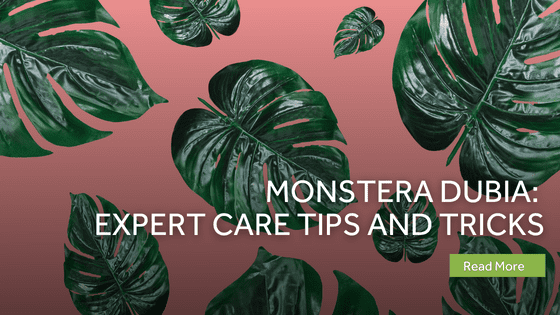The Monstera dubia is a beautiful addition to your plant collection. It’s easy to care for and makes a lovely addition indoors or outdoors for plant enthusiasts. It’s harder to find than other Monstera plants, but when you do, it can last for a long time.
Table of Contents
Monstera Dubia Overview
The Monstera dubia plant originates from Central and South America. It’s used to high temperatures and is quite the climber, so it will need adequate support to help it keep its shape. The plant grows well indoors and out, but when grown outdoors has endless height possibilities.
The Monstera dubia plant is from the Araceae family and the Monstera genus. The specific species is called the M. dubia, but you might also hear the plant called the shingle plant, thanks to its flat leaves.
The Monstera dubia is lesser known than most Monstera plants, but it is a beautiful plant that can add to any garden or indoor plant collection.
The most common varieties of the Monstera plant are the Monstera deliciosa and the Monstera adansonii.
| Family | Araceae |
| Genus | Monstera |
| Origin | Central and South America |
| Sunlight | Indirect or filtered sunlight |
| Watering | Two to three times a week in the growing season and once every couple of weeks in the non-growing season |
| Soil | Well draining |
| Temperature | Between 55 – 75 degrees |
| Propagation | Stem cuttings or division |
| Re-Potting | Not often necessary |
| Pests and Diseases | Root rot, red spider mites, and brown scale bugs |
| Toxicity | Toxic to animals and humans |

Monstera Dubia Features
The Monstera dubia plant can reach incredible heights, especially when left to grow outdoors. The length of this vining plant can be as much as 80+ feet in the wild, but indoors, with regular trimming, it’s usually around 5 to 6 feet tall.
The leaves are a spectacular feature of the Monstera dubia. They are different in juvenile plants than mature Monstera dubia plants. In their juvenile years, the plant has heart-shaped leaves. Like a tree, the leaves lay flat against the surface they grow against. The juvenile plants have leaves that have both green and dark green variegation.
As the plant matures, the leaves change, but this usually only happens in the wild, not when it’s kept as part of a houseplant collection. Mature leaves don’t have any variegation. They also have large fenestrations, like a Monstera deliciosa plant.
The Monstera dubia does flower, but usually only in the wild. The plant flowers when the juvenile leaves mature. The flowers aren’t incredibly large or showy. They are light pink, almost salmon, and only show when the plant is on a totem.
It’s important to know that the Monstera dubia is very toxic, so you should keep it away from kids and pets.
Monstera Dubia Care Guide
Caring for Monstera dubia is easy, which is excellent news for anyone just starting out or if you don’t want a complicated plant to add to your collection.
Ideal Growing Place
As we mentioned, these are tropical plants, so they love sunlight and heat. Unfortunately, they also don’t do well in cold temperatures. While it can be an outdoor plant and grows great in the wild, it doesn’t withstand frost or if temperatures drop below 50 degrees Fahrenheit.
Ideally, the plant prefers temperatures between 55 and 77 degrees, which makes it a perfect indoor plant, but if you plant outdoors, keep an eye on the weather.
Like most Monstera plants, the dubia plant grows the most in the spring through fall months.
Water
The dubia plant likes water, but too much water isn’t good, like most Monstera plants. The best practice is to wait until the top two inches of soil are dry. You can determine this by sticking your finger in the soil. If the top two inches are dry, it’s time to water.
Typically, this plant needs watering once or twice a week in the hotter months and once every couple of weeks in the colder months. Avoid overwatering your plant, as these plants do not like wet soil.
Sunlight
The dubia plants like the sun, but they do not like direct sunlight. They prefer indirect sunlight or filtered light. If you grow the plants outdoors, make sure something is shading the sun, such as a large tree. The tree can also help the plant grow upwards.
If you grow the plant indoors, place it in an area with filtered sunlight, such as through curtains or in an area that it’s not hit by direct sunlight. If the leaves receive too much direct light, it could burn them.
A great way to tell if your plant is getting too much sun before the leaves scorch is to see if your plant creates a shadow. If it does, it’s a sign that it’s receiving too much light.
Temperature
Like we said earlier, these are tropical plants. They like warm weather, so the hotter, the better. They usually thrive indoors in most environments, but use caution when placing the plant. Ensure it’s not near a draft, such as a window, or too close to a vent.
If you grow the plant outdoors, make sure you have the ideal temperatures. Anything in the 70s is perfect for this plant. However, as it cools down, you should use caution as lower temperatures in the low 60s and 50s aren’t good for the plant.
Soil
The Monstera dubia plant likes loose soil rich in organic matter. Therefore, it should be well-draining soil with as much organic matter as possible. Like most Monsteras, a chunky soil mix is best and should include peat moss, orchid bark, and perlite. These organic particles help keep the soil moist but also well draining.
It’s important to note that regular potting soil is not good for the dubia plant. It isn’t loose enough and can cause the plant’s roots to suffocate and the plant to die prematurely.
If you’re into checking a soil’s pH level, Monstera plants like a pH level of 5 to 7.5
Humidity
It’s probably no surprise that the Monstera dubia plant loves humidity. These tropical plants prefer humidity levels over 50%.
You can tell a dubia plant isn’t getting enough humidity because its leaves curl. If the weather outside or your environment inside doesn’t provide enough moisture, spraying the leaves lightly with water may help. You can also place a water pebble tray under the plant or add a humidifier to the room.
If you’re in a sweltering area, you may even consider spritzing the plant’s leaves twice a day to keep them from curling.
Related Article: Variegated Monstera Adansonii: Instructional Care Guide
Fertilizer
Monstera plants love fertilizer but only need it approximately three times a year. You can use a houseplant fertilizer; just make sure it’s slow-release. You can also use a balanced fertilizer monthly during the growing season, which is the spring through fall months.
Pinching/Pruning
Pinching and pruning are essential for these creeping vines. If left unpruned, it could grow to unmanageable lengths indoors. Outdoors, of course, if you have the room, you can let it grow as much as you want.
Indoors, however, the shingle plant should be trimmed and pruned periodically. Remove the dead leaves, too, so that the plant has healthy growth.
Potting and Re-potting
Like most Monstera plants, the Monstera dubia plant likes big pots with plenty of drainage holes. They don’t like to be rootbound, so choose a pot at least 10 inches deep for starters.
You may not have to repot the Monstera dubia, though. If you notice it becoming root bound because the roots are growing out of the pot, repot it. Otherwise, you can leave it in its original pot and trim it regularly.

Growth Zone
Like most Monstera plants, the Monstera dubia likes USDA zones 9b to 11 if you grow the plants outdoors. However, if you grow them indoors, any zone is acceptable.
Common Pests, Toxins, Diseases & Other Problems
The most significant issue the Monstera dubia plant has is root rot. This often happens when the roots don’t have enough drainage and become waterlogged. It can also occur if you choose the wrong soil mix, not allowing enough breathing or drainage room.
The dubia plant also has trouble with two types of pests – red spider mites and scale insects. Both bugs are sap-sucking pests that can hurt your plant. The first thing to do is remove the plants’ pests when you find them. You can use cotton swabs because they can be hard to remove with your fingers. Next, clean the plant with neem oil or rubbing alcohol.
Propagation
Like most Monstera plants, there are two ways to propagate the Monstera dubia. You can use stem cuttings or division.
To use stem cuttings, you’ll need stem cuttings of 5 to 7 inches. Make sure to use sterilized pruning shears when you cut them, and include a couple of leaves, cutting below the node.
Let the cutting sit by itself for a few weeks to create a callous. This is what helps the root grow when you plant it in soil. When you plant it, make sure to use loose, organic soil and to plant the stem by cutting at least two inches deep in the soil. Along with the cutting, you’ll need wooden support, like a wooden dowel, to support it. Plant the dowel with the plant, tying them together for support.
The pot needs indirect light and should be kept in a warm place. Don’t overwater the soil, either. Instead of using a watering can, lightly spray the soil when it looks to be about halfway dry.
If you’re in a hurry to have another Monstera dubia, you can use the division method. To do this, you must remove the dubia plant from the soil. Before you do, prepare a new pot with well-draining and organic soil for the new plant. Also, make sure you have sterilized pruning shears.
Carefully remove the plant from the soil mix and cut it in half. Next, pot each plant into its respective pots, taking care to water them properly and if they need support to provide it.
Monstera Dubia Mature Timeline
It takes about three weeks for the roots of a Monstera dubia to grow from a stem cutting. It then takes another month or two for the shoots to begin growing. Once you see shoots, you have a new Monstera dubia and can care for it, like we discussed above.
Monstera Dubia FAQ
How Old Does Monstera Dubia Have to Be Before They Bloom?
The Monstera dubia plant flowers once all leaves have matured. This usually only happens to Monster plants outdoors, though. Indoors, these plants typically don’t flower.
Is Monstera Dubia a Fast Grower?
The Monstera dubia is a slow-growing plant. It usually lasts in the same pot for two to three years and sometimes even longer. Some plants never have to be repotted if you start them in a large enough pot.
Are Monstera Dubia Hard to Grow?
Fortunately, the Monstera dubia is easy to grow. So it’s great for beginners or anyone looking for a fun addition to their houseplant collection.
Where Can I Buy Monstera Dubia?
The shingle plant is rare, so you typically won’t the Monstera dubia for sale at your local nurseries. Instead, your best bet to buy Monstera dubia is to look online at specialty nurseries or shop on Etsy.
Do Monstera Dubia Need Soil?
Yes, this tropical plant needs well-draining soil rich in organic material. Make sure the soil is loose so that it drains properly. Like most Monstera plants, this plant doesn’t like too much water and will develop root rot which can kill the plant prematurely.
Is the Monstera Dubia Expensive and Why?
Despite being a rare plant, it’s not as expensive as you think. You can usually find stem cuttings on sites like Etsy for $30 – $40.
How Do I Know if My Monstera Dubia is Healthy?
The easiest way to tell if your shingle plant is healthy is to look at its leaves. If they lie flat as a juvenile plant or hang off the plant as a mature Monstera dubia plant, they are healthy. If, instead, they are yellow, have brown spots, or curl, it’s a sign that your plant isn’t healthy.
Can I Grow the Monstera Dubia Indoors?
Yes, the Monstera dubia plant grows well indoors, especially if you don’t live in a zone where it thrives outdoors. When growing the plant indoors, ensure it has indirect sun and enough humidity. Keep it away from drafts and if it doesn’t have enough moisture, add a humidifier or spray the leaves with water periodically.
Is the Monstera Dubia a Philodendron?
No, the Monstera dubia is not a philodendron plant. If anything, it’s more related to the peace lily.
What Does Monstera Dubia Smell Like?
Typically, the Monstera dubia doesn’t have a scent. However, if you notice a rotten egg or foul smell coming from it, the plant may have root rot and need proper care.
What Kind of Pot Is Suitable for a Monstera Dubia?
Monstera dubia plants do well in any type of pot as long as it’s well-draining. Ideally, you should plant your dubia in a pot at least 10 inches deep. This gives it plenty of room for drainage and growth, and you may not have to repot it. More importantly, provide your plant with a moss pole or trellis so it can climb.
Is Monstera Dubia Rare?
Yes, the Monstera dubia is rare. You typically won’t find them at your big box nurseries, but you can usually find them online.
Are Monstera Plants Toxic to Humans and Pets?
Yes, these plants are extremely toxic and should be kept away from all plants and children. If ingested, call for medical help immediately.
The Bottom Line
Consider adding the Monstera dubia plant to your plant collection, especially if you’re looking for a plant that’s easy to grow and care for. The plant doesn’t flower indoors, but its beautiful vine makes an excellent addition to your indoor plants, or let it grow in the wild and see how long it can get.
Last Updated on September 21, 2022 by Gustaf Johansson




